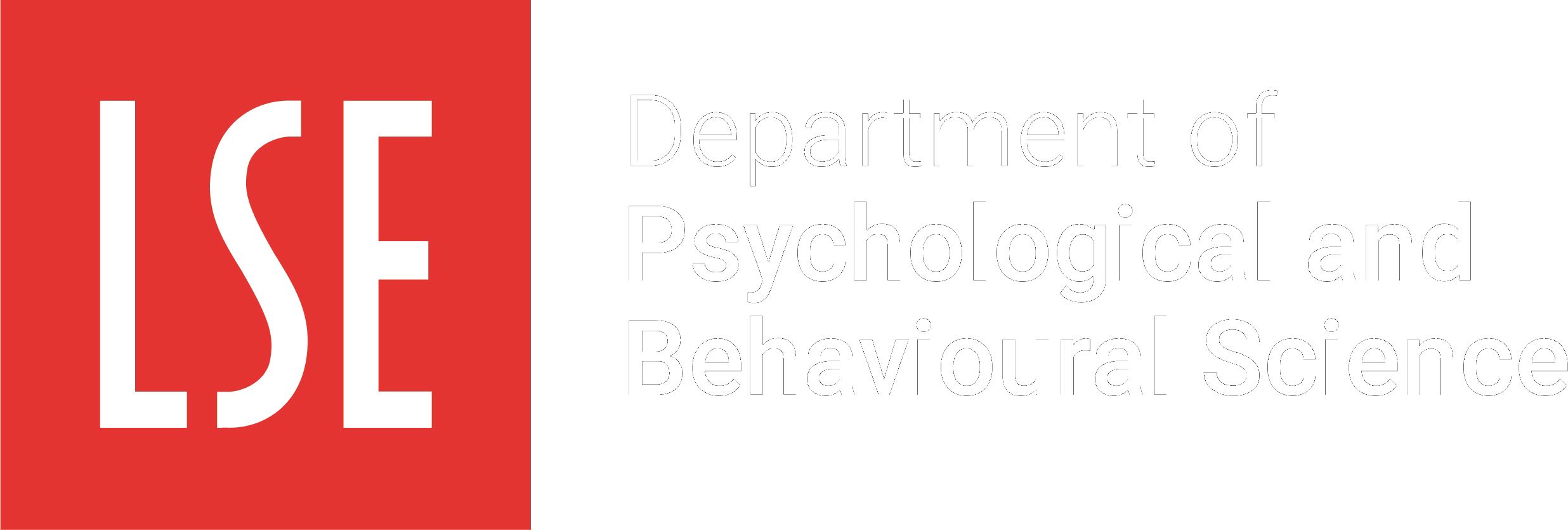Why do we have personalities? In this post, David Feng explains what personalities are and how we can understand them from an evolutionary perspective. Part of the PB101: Foundations of Psychological Science series (access the whole series here).
People are different. Some always arrive early and others consistently arrive late. Some despise speaking up while others never seem to stop talking. These individual differences, or general styles of interacting with the world, are called personalities (Gray & Bjorklund, 2018). However, while we know a lot about personality types, not much attention has been placed on why these types exist.
What is personality, technically?
Personalities are relatively stable behavioural predispositions, or traits, that propel individuals to behave in a certain way (Gray & Bjorklund, 2018). Unlike states, which are the emotions and behaviours induced by a situation, traits are carried throughout environments and across the lifespan.
Gordan Allport (1937), a pioneer of personality psychology, found 17,953 personality descriptors in an English Dictionary, subsequently condensed down to 170 unique adjectives by Cattell (1950). Researchers used a statistical technique called factor analysis that identified a set of unrelated traits under which these adjectives fell into. This set of traits is now known as the five-factor model, or the Big Five theory, and is considered to be one of the most robust models of personality (Gray & Bjorklund, 2018).
Summarised by the acronym OCEAN, the five-factor model identifies openness to experience (the extent one enjoys new experiences and ideas), conscientiousness (the extent one is self-managing and dutiful), extraversion (the extent one prefers interpersonal interactions), agreeableness (the extent one is concerned with others) and neuroticism (the extent one experiences negative emotion) as five relatively independent dimensions, where individuals vary by degree. Each trait also contains six interrelated facets.
Figueredo et al (2005) also illustrates that extraversion, neuroticism and agreeableness appears in many non-human species, suggesting that individual differences may be grounded in evolutionary history.
Personality as an adaptive evolutionary system
When examined from the perspective of evolution, personality fulfils all three criteria of evolutionary adaptation – variation, transmission and selection – and can be seen as a problem-solving strategy adaptive to dynamic environments (Chudek et al, 2015).
1 Cross-cultural variation
The five-factor model’s origins in the English vocabulary raises issues regarding generalisability to other cultures that also serve to illustrate the variation in personality. Indeed, Gurven et al (2012) failed to find support for the model among forager-farmers in the Bolivian Amazon, even when educational level, Spanish fluency, sex and age are considered. Alternatively, the authors found support for a two-factor model that were organised according to prosociality and industriousness, indicating that personality dimensions can vary cross-culturally.
This can be interpreted using Smaldino et al’s (2019) niche diversity hypothesis, positing that personality dimensions increase as niches, or the ways resources can be extracted from the environment, increase. Assuming that a closer fit between niche and personality yields greater payoffs, greater variation in environment incentivises greater variation in personality that is adapted to these environments.
2 Genetic and environmental transmission
The notion that personality varies as adaptations to environments is consistent with its genetic and environmental mechanisms of transmission. Genetically, traits identified by the five-factor model are strongly heritable (Gray & Bjorklund, 2018), with genetic influence ranging from 40 to 50% and are approximately equally heritable for all five traits (Bouchard, 2004). Therefore, assuming limited mutation rates, personality traits can be vertically transmitted from parent to offspring.
Traits can also be inherited from the environment through oblique transmission from elders and horizontal transmission from peers, guided by social learning (Chudek et al, 2015). The extent to which social learning occurs and is adaptive, however, differs according to the extent of variation present in the environment – difficulty for asocial learning and moderate fluctuation facilities adaptation. This capacity is accentuated in humans, who over-imitate at the expense of efficiency through high-fidelity social learning, retaining information accuracy – an observation not seen in chimpanzees (Horner & Whiten, 2005).
3 Natural and cultural selection
Natural and cultural selection selects personality traits based on their fitness, where the “optimal value”, or adaptability, of a trait varies across time and space (Nettle, 2006). This is exemplified by Schaller and Murray’s (2008) finding that disease prevalence negatively predicts extraversion and openness to experience, suggesting that individuals are less sociable and more cautious to avoid pathogen transmission. The authors address reverse causality by illustrating that the observed relationship would be opposite should disease prevalence be an outcome of personality.
Crucially, these behavioural patterns are selected both genetically and culturally. Genetically, extraversion and variation of the dopamine D2 receptor gene predicts reward sensitivity, subsequently selected based on selection pressures such as disease prevalence (Cohen et al, 2005). These genetic adaptations are reinforced by norms, preferences and institutions instantiated culturally. Deviations from culture risk marginalisation from resources that promote fitness, such as partners or employment. Alternatively, adapted personality traits inherited through high-fidelity social learning can maximise resources, simultaneously influencing biology in the short-term and genes in the longer-term (Chudek et al, 2015). However, some personality traits may be vestigial, serving functions that are no longer adaptive today (Gray & Bjorklund, 2018). Furthermore, evolution does not have foresight and only operates in the immediate environment.
Equally, evolution can favour rare traits through the mechanism of frequency-dependent selection, whereby the fitness of a trait depends on its frequency in the population (Ayala & Campbell, 1974). Positive frequency dependence occurs when the more common a variant is, the more successful it is, thereby eliminating variation (Feder et al, 2017). Inversely, negative frequency dependence facilitates heterogeneity.
The latter is consistent with the niche diversity hypothesis: as potential avenues of obtaining resources increase, selection favours the uncommon personalities that can access avenues common personalities cannot. Whether frequency-dependent selection of personality traits is positive or negative likely depends on the environment’s selection pressures.
Why not everyone?
If some personalities are more adaptive than others, why do they not spread throughout the entire population? Tooby and Cosmides (2005) raise this persuasive objection against viewing personality as a product of evolution, instead proposing that variation is simply “evolutionary noise”.
One explanation may be found in niche diversity hypothesis, where homogeneity in personality will deplete resources from concentrated niches. A distribution of personality, instead, can reach an equilibrium between personality and resources.
Furthermore, personality yields advantages and disadvantages, even in similar environments. For instance, extraversion increases mating success while heightening risk of physical harm, illustrating personalities as trade-offs rather than all-or-nothing functions (Nettle, 2005).
At the ultimate level, personality should be viewed as patterns of behaviour calibrated by the demands of our natural and cultural environment. It is this cycle of variation, transmission and selection that renders personality as an adaptive evolutionary system, highlighting the fundamental necessity of diversity in a dynamic world.
Notes:
- This blog post was originally written as part of PB101: Foundations of Psychological Science, a compulsory course on the BSc Psychological and Behavioural Science programme in the Department of Psychological and Behavioural Science at LSE. It has been published with the permission of the author. Visit the PBS website for more information on studying in the department: https://www.lse.ac.uk/PBS/Study.
- The views expressed in this post are of the author and not the Department of Psychological and Behavioural Science or LSE.
- Featured image by Christian Battaglia on Unsplash.
References
Allport, G. W. (1937). Personality: a psychological interpretation. Holt.
Ayala, F., & Campbell, C. (1974). Frequency-Dependent Selection. Annual Review of Ecology and Systematics, 5, 115-138. http://www.jstor.org/stable/2096883.
Bouchard, T. J. (2004). Genetic Influence on Human Psychological Traits: A Survey. Current Directions in Psychological Science, 13(4), 148–151. https://doi.org/10.1111/j.0963-7214.2004.00295.x.
Cattell, R. B. (1950). Personality: A systematic theoretical and factual study (1st ed.). McGraw Hill. https://doi.org/10.1037/10773-000.
Chudek, M., Muthukrishna, M., & Henrich, J. (2015). Cultural Evolution. In Handbook of Evolutionary Psychology, 2nd Edition. Edited by D. M. Buss.
Cohen, M. X., Young, J., Baek, J., Kessler, C., & Ranganath, C. (2005). Individual differences in extraversion and dopamine genetics predict neural reward responses. Brain Research. Cognitive Brain Research, 25(3), 851-861.
Feder, J.L., Hood G.R., Doellman, M.M., Schuler, H., Miller, A.,Tait, C., Glover, M.M., Meyers, P. (2017). Speciation, Process of. Reference Module in Life Sciences. Elsevier. https://doi.org/10.1016/B978-0-12-809633-8.02366-9.
Figueredo, A. J., Sefcek, J. A., Vasquez, G., Brumbach, B. H., King, J. E., & Jacobs, W. J. (2005). Evolutionary personality psychology. In D. M. Buss (Ed.), The handbook of evolutionary psychology (pp. 851–877). Hoboken, NJ: Wiley.
Gray, P. O, & Bjorklund, D. (2018). Psychology. New York: Macmillan Learning.
Gurven, M., von Rueden, C., Massenkoff, M., Kaplan, H., & Lero Vie, M. (2013). How universal is the Big Five? Testing the five-factor model of personality variation among forager-farmers in the Bolivian Amazon. Journal of personality and social psychology, 104(2), 354–370. https://doi.org/10.1037/a0030841.
Horner, V., & Whiten, A. (2005). Causal knowledge and imitation/emulation switching in chimpanzees (Pan troglodytes) and children (Homo sapiens). Animal Cognition, 8(3), 164-181.
Nettle, D. (2005). An evolutionary approach to the extraversion continuum. Evolution and Human Behavior, 26(4), 363-373.
Nettle, D. (2006). The evolution of personality variation in humans and other animals. American Psychologist, 61(6), 622-631. https://doi.org/10.1037/0003-066X.61.6.622.
Schaller, M., & Murray, D. R. (2008). Pathogens, Personality, and Culture. Journal of Personality and Social Psychology, 95(1), 212-221.
Smaldino, P. E., Lukaszewski, A., Rueden, C. V., & Gurven, M. (2019). Niche diversity can explain cross-cultural differences in personality structure. Nature Human Behaviour, 3(12), 1276-1283.
Tooby, J., & Cosmides, L. (2005). Conceptual Foundations of Evolutionary Psychology. In D. M. Buss (Ed.), The handbook of evolutionary psychology (pp. 5–67). Hoboken, NJ: Wiley.




